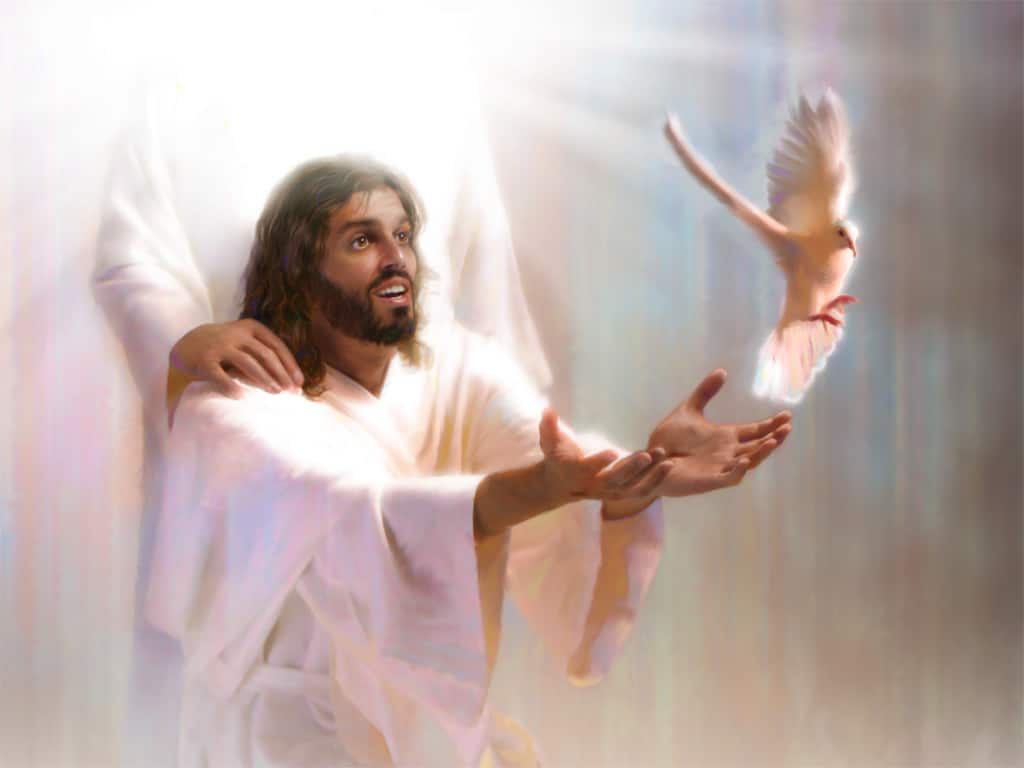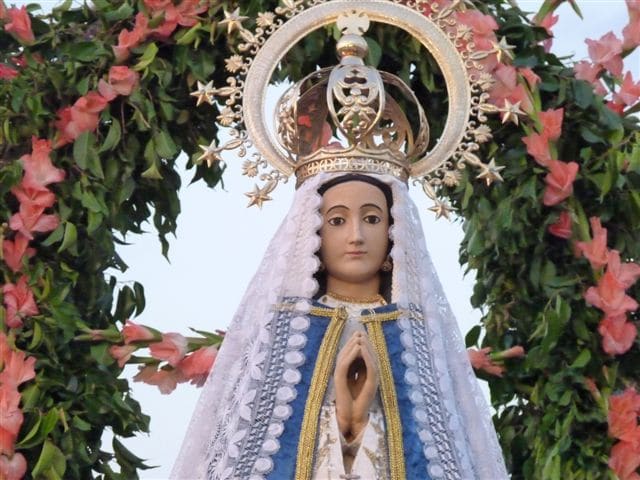Learn all about the Seventh-day Adventist Church here
The Seventh-day Adventist Church is one of the denominations that make up the Protestant Christian doctrine. In this article we will present information related to the history of this church, its beliefs and some interesting aspects of this doctrine.
The Seventh-day Adventist Church
This is the branch of Protestant Christianity that emerged from the Millerite Movement, according to the ideas of William Miller, in the 1840s in the United States, but which later became an independent church.
This church is based on the concept of the second coming of Christ or advent of the Lord. From there, his name, in which his beliefs are reflected in three key words; namely:
- Adventist , which assures the imminent return or advent of Jesus to this earth, which they consider will be a visible and glorious return.
- Seventh day , which refers to the biblical Sabbath, which, as we know, is the day of rest granted by God’s grace to men and observed by Jesus when he was incarnated.
- Ultimately, these two terms together speak of salvation in Jesus Christ.
Also learn from the Pentecostal Church
Adventism is an organization that since its very beginning has been strengthened and become the organization with the largest extension and membership in the world. It has congregations in more than 200 countries and the number of its members exceeds 20 million.
The Adventist Church is organized worldwide in 13 divisions, which are connected to the main headquarters located in Silver Spring, Maryland, United States.
It has a global coordination, which is under the responsibility of the General Conference of the Seventh-day Adventist Church. Every five years, this conference organizes and holds an assembly to appoint the leaders and administrators of the different entities through votes and official documents. , applying a system of representative democracy.
Their liturgical precepts are totally based on the Bible, which they consider the revelation of God.
Seventh-day Adventists are grouped at four levels, from each individual member to the global organization. Thus we have:
- The local Church, made up of the individual members
- The local Conference/Mission. It is a body made up of the churches of a particular state, province, or territory.
- The union, which is made up of several associations/missions, which belong to the same region and have a broader scope.
- The General Conference, which is the one that includes the entire organization and is made up of all the divisions from around the world.
- Divisions are the sections that make up the General Conference with administrative responsibility in certain geographic areas.
- He leads the denomination worldwide.
Among its basic Protestant teachings is the supreme authority of the Bible, the Trinity, and Salvation in Jesus Christ.
In addition, they also have some particular beliefs, such as the observance of Saturday as a day of rest, the doctrine of the investigative judgment, which affirms that since 1844 the divine judgment of Christians has been increasing and the manifestation of the gift of prophecy, which is the supernatural gift through which things of the future are known by divine inspiration, according to the ministry of Ellen G. White, Adventist author.
They strive for the development of a healthy lifestyle, in which physical exercise, vegetarianism and abstinence from alcohol, tobacco and other substances harmful to the human body are encouraged.
They carry out various activities promoting Christian education, the protection of religious freedom and conservative ethical principles.
The church is responsible for the development and administration of numerous schools, universities, hospitals, clinics, and publishing houses throughout the world. It stands out, mainly the humanitarian organization called Adventist Agency for Development and Assistance Resources.
History
The history of the origin of the Adventist movement is presented by various events that led, finally, to the creation of the Seventh-day Adventist Church proper.
As has already been pointed out, this Protestant Christian denomination began to form in the United States in the mid-19th century, but was formally consolidated in 1863.
Its formation was carried out in stages. Let’s see:
Millerite Movement
This name is given to the Adventist movement that was forged from the ideas of William Miller, who was an American farmer, of Baptist religion who began to preach during the so-called Second Great religious Awakening.
This event, as is known, was a Christian revival, which was called a “revival” and spread throughout the United States. It extended to the period before the Civil War. It was a time of great Christian evangelizing activity, in which many conversions took place.
Miller, who had already been a convert to the Baptist faith since the 1820s, made an exhaustive study of the chronologies of the Bible, specifically the prophetic books of Daniel and Revelation and, by virtue of what was stated there, he interpreted that the scriptures in Daniel 8:14, which spoke of a period of 2300 days, indicated that Christ would return, according to their estimates, around 1843.
This led him to carry out a preaching campaign of his findings in 1831, which consolidated him as the leader of a popular movement. As the year 1843 approached, Miller clarified his predictions and stated that Christ would return between March 21, 1843 and March 21, 1844.
the big disappointment
By virtue of the predictions made by Miller and his group of followers, they had to face a lot of ridicule. His expectations grew with the sudden arrival of a comet in the night sky in March 1843.
However, disappointment was not long in coming when the long-awaited second coming did not take place in March 1844.
Despite this failure, even the followers of the movement persisted in the return of Christ and that is how a Millerite follower Samuel S. Snow dared to suggest a new date, October 22, 1844.
Nor did anything extraordinary happen that day, which caused the disappointment of both the Millerites and the two hundred and fifty thousand people who, in a massive act, waited with great anxiety for the second coming of Christ.
This event went down in advent history as the Great Disappointment, leading many believers to leave the movement.
You may be interested in knowing what the Methodist Church consists of
Sabbatarian movement
Despite the failures that occurred, the movement of Miller continued with those who remained faithful to the doctrine, who considered that a misinterpretation of the prophecy was made.
Thus, they began a new study of chapters 8 and 9 of the book of Daniel and pointed out that what had begun was a purification of the heavenly sanctuary, which was invisible and imperceptible to humans, but would be visualized in the future.
With this divine purification of 1844, according to Miller and his group, God had begun a kind of examination of each one of the human beings and once finished, Jesus would return to earth, which was an imminent event that would happen, but no longer. They gave a specific date.
By virtue of the position that the Millerites began to propagate regarding Saturday, the seventh day of the week, which should be a day of rest for all Christians, they began to be called the “Sabbathist movement”.
Creation of the church of God (Seventh Day)
Later splits occurred in the movement and so a group of Adventists, led by Gilbert Crammer, an evangelical pastor, broke away from the Millerites and organized the Church of God (Seventh Day) in 1858.
Foundation of the Seventh-day Adventist Church
Later and by virtue of the deepening of the practice of worship on Saturday, they gave it the denomination of Seventh Day, in 1863. It began, then, to be called: the Seventh-day Adventist Church.
These Seventh-day Adventists also believed that the writer and believer Ellen G. White had that gift of prophecy, so through her writings they began the work of shaping the beliefs and practices that the church should follow from that moment on.
other groups
Other Adventist groups continued to appear during the 19th century, such as:
- The Advent Christian Church and Advent Life Union, which merged and later founded the Advent Christian Church in 1964.
- They rejected the prophecies of Ellen White and the observance of the seventh day.
- The International Association of Bible Students. It was inspired by Miller’s Adventist teachings.
- Founded in 1872 by preacher Charles Taze Russell.
-
- They later changed their name to Jehovah’s Witnesses in the 1930s.
- It was the second successful group to emerge from the Millerite movement.
- The Worldwide Church of God. It appeared in the 1930s as a division of the Church of God (Seventh Day).
- During the 1980s, they reported more than 100 thousand members.
- In 1990, a process of doctrinal re-evaluation was carried out that led to the renunciation of beliefs inherited from Adventism and they joined, then, evangelicalism.
Logo
The Adventist Church logo design reflects the values that guide all committed Adventists. In it you can see:
- The Second Coming: Represented by the upper lines that give the idea of a constant ascending movement, symbolizing the resurrection and ascension to heaven, after the Second Coming.
- The flame: It is observed in the three lower lines that they seem to enclose an implicit sphere. The lines symbolize the three angels of Revelation 14.
- With them, they seek to give the sensation that they surround the planet in order to take the gospel to the whole world.
- Both the image of the Second Coming and the image of the flame together symbolize the symbol of the Holy Spirit.
- The cross: Symbolizes the gospel of salvation.
- It appears in the center of the logo to emphasize the sacrifice of Christ, which is the central theme of the faith.
- The open Bible: It is the basis of the logo as representing the biblical foundation of Adventist beliefs.
- Being open means a full acceptance of the Word of God.
Who can use the logo?
This logo is a registered trademark that can be used both by the Seventh-day Adventist Church, as well as by all its entities and churches, as well as by all those institutions that are authorized by the General Association of Seventh-day Adventists, its divisions, unions and associations.
Learn which is the largest evangelical church in the world
beliefs
The Seventh-day Adventist Church professes 28 fundamental beliefs supported by different Bible verses and those that emerged from the path that this doctrine has had to go through to reach the position it currently holds. Here are some of these beliefs:
The Holy Scripture
One of the most important beliefs of Adventists. The Holy Scriptures, both the Old and New Testaments, are the written Word of God, which was handed down by divine inspiration. According to them, the authors chosen by the Lord spoke and wrote according to the dictates they received from the Holy Spirit.
Through this Word, the Almighty communicates to humanity the knowledge that is needed to achieve salvation. That is why it is said that the Holy Scriptures are the supreme and infallible revelation of the will of God.
They are the record of God’s acts throughout human history, which provide the proper character and criteria for evaluating experiences.
In this regard, the following verses support this belief: Ps. 119:105; Prov 30:5, 6; Isa. 8:20; John 17:17; 1 Thess. 2:13; 2 Tim. 3:16, 17
The Trinity
For Adventists, there is only one God: Father, Son and Holy Spirit. They are three co-eternal persons who form a unit. Furthermore, God is immortal, almighty, and superior to all. He is infinite and human understanding fails to see the great dimension of him.
For this church, God, who is love, is forever worthy of reverence, worship and service by all creation.
It is possible to read in the following biblical citations what is related to the Trinity: Gen. 1:26; Deut. 6:4; Isa. 6:8; Matt. 28:19; John 3:16; 2 Cor. 1:21, 22; 13:14
The father
In Adventist doctrine, God the Father is the Creator. For them he is the one who originates everything, he sustains it and he is the only sovereign of all creation.
He is a just, holy, merciful and merciful God, abundant in love and fidelity and not prone to anger. These qualities and faculties are transmitted both to the Son and to the Holy Spirit.
The scriptures that reinforce this belief are: Gen. 1:1; Deut. 4:35; John 3:16; 14:9; 1 Cor. 15:28; 1 John 4:8; Apoc. 4:11
The son
Following the Trinity, this church believes in the Eternal God, who became incarnate as Jesus Christ, his Son, thereby creating all things and revealing the character of God. Thanks to the Son humanity was saved.
Despite being the true creator God, he was also truly human. Thus, they believe that he was conceived by the Holy Spirit, born of the virgin Mary, lived as a human being, tempted by the evil one, but without falling into sin.
He was an example of truth, justice and the love of God. He performed miracles and manifested the power of God, but he willingly suffered and died on the cross for our sins.
As the conqueror of evil, he rose from the dead and ascended to heaven to intercede for us in the heavenly sanctuary.
Adventists maintain that the Son will return, to the Glory of God and to definitively liberate the people and restore all things.
Verses that support this position: Isa. 53:4-6; Dan. 9:25-27; John 1:1-3, 14; 5:22; 10:30; 14:1-3, 9, 13; 1 Cor. 15:3, 4; 2 Cor. 3:18; 5:17-19; Col. 1:15-19; Heb. 2:9-18; 8:1, 2
the holy spirit
According to Adventist belief, God as the Holy Spirit plays an active part in creation, incarnation, and redemption. To them he is a person, just like the Father and the Son.
It was the inspiration that caused the authors of the Scriptures to take on that mission, infusing them with the power of the life of Christ.
Sent by the Father and the Son to be with their children always, he bestows spiritual gifts on the church, enables her to bear witness for Christ, and, in harmony with the Scriptures, guides her into all truth.
Biblical quotes that support the belief: Gen. 1:1, 2; 2 Sam. 23:2; Ps. 51:11; Isa. 61:1; John 14:16-18, 26; 15:26; 16:7-13; 1 Cor. 12:7-11; 2 Cor. 3:18; 2 Pet. 1:21
The nature of humanity
According to Adventists, God made men and women in his likeness, gave them their own individuality and freedom to think and act. He created them as free beings, as an indivisible unit of body, mind and spirit.
When our first parents disobeyed God, denied their dependence on him, and fell, they lost their privileges. Thus, the image of God in them was disfigured and they were subject to death. Their descendants partake of this fallen nature and its consequences.
Supporting Bible citations: Gen. 1:26-28; 2:7, 15; 3; Jer. 17:9; done 17:24-28; 2 Cor. 5:19, 20; Eph. 23; 1 Thess. 5:23; 1 John 3:4; 4:7, 8, 11, 20
Saturday
Since the Creator of heaven and earth, after six days of creation, rested on Saturday, he instituted it as a day of rest for all men.
This is indicated by the fourth commandment of the Law of God in which the observance of the seventh day, Saturday, is indicated as rest, adoration and practice of the teachings of Jesus, the Lord of Saturday, propitious for communion with God and with our brothers.
The Sabbath symbolizes our redemption in Christ, a sign of sanctification, a demonstration of our loyalty, and an anticipation of our eternal future in the Kingdom of God.
Holy Scriptures supporting the belief are: Gen. 2:1-3; Exo. 20:8-11; 31:13-17; Lev. 23:32; Deut. 5:12-15; Isa. 56:5, 6; 58:13, 14; Eze. 20:12, 20; Matt. 12:1-12; Mark 1:32; Luc. 4:16; Heb. 4:1-11
The baptism
Adventists point out that baptism means faith in the death and resurrection of Jesus. It also testifies to our death to sin.
This gives recognition to Christ as our Lord and Savior, as his people and members of his church.
This belief indicates that baptism is a symbol of union with Christ, forgiveness of sins and reception of the Holy Spirit.
It is done by immersion in water, as an affirmation of faith in Jesus and evidence of repentance of sin.
Verses about this belief: Matt. 28:19, 20; done 2:38; 16:30-33; 22:16; Rom. 6:1-6; Gal. 3:27; Col. 2:12, 13
The Gift of Prophecy
The Scriptures highlight that one of the gifts of the Holy Spirit is prophecy, which is a sign that identifies the remnant church and that was manifested in the ministry of Ellen White.
Adventists support his writings as they refer to prophetic authority, apart from giving instruction, comfort and direction to the church.
Biblical quotes about this belief: Num. 12:6; 2 Chron. 20:20; Joel 2:28, 29; done 2:14-21; Heb. 1:1-3; Apoc. 12:17; 19:10; 22:8, 9
The second coming of Christ
Adventists firmly believe in this second coming of Christ, which for them is the great culmination of the gospel. According to them it will be personal, visible and global in scope.
When the Lord returns, the righteous dead will be resurrected and with the righteous who are alive, they will be glorified and taken to heaven.
According to your perception, the current conditions of the world are an indication that this coming is near. It has not yet been revealed when it will happen, so they urge you to be prepared at all times.
Some biblical quotes on the subject in: Mat. 24; March 13; Luc. twenty-one; John 14:1-3; 1 Cor. 15:51-54; 2 Thess. 1:7-10; 2:8; 2 Tim. 3:1-5; Titus 2:13; Apoc. 1:7; 14:14-20; 19:11-21
Life, death and resurrection of Christ
With this belief, Adventists make explicit that God provided us with the only way to atone for sins. She went through the life of sufferings, death and resurrection of Christ.
They point out that those who by faith accept this atonement can have eternal life and thus understand the infinite love of the creator. It is the perfect way to expiate sins, since it is done with divine justice, which condemns sin, but guarantees forgiveness.
Thanks to the resurrection of Christ, the triumph of God over evil was proclaimed and this leads to the final victory over sin and death to the one who accepts the atonement.
You may be interested in knowing what God’s promises are for the family
Spiritual gifts and ministries
This belief is based on the certainty that God grants everyone spiritual gifts that must be used for the common good of both the church and the neighbor. God bestows them through the Holy Spirit. He distributes them according to the capacity of each one and according to his will.
These gifts provide all the abilities required by the church to properly perform its functions.
The Scriptures point out that among the gifts are the ministries of: prophecy, faith, preaching, reconciliation, teaching, healing, administration, selfless service, among others.
Also, according to this belief, God and the Holy Spirit grant the so-called pastoral, evangelization and teaching gifts, with which they not only provide a service to the community, but also help build the church to achieve its spiritual maturity. , unity of faith and knowledge of God.
Thanks to the practice of this belief, the proper use of spiritual gifts, the ecclesiastical institution is protected from bad influences and false doctrines.







